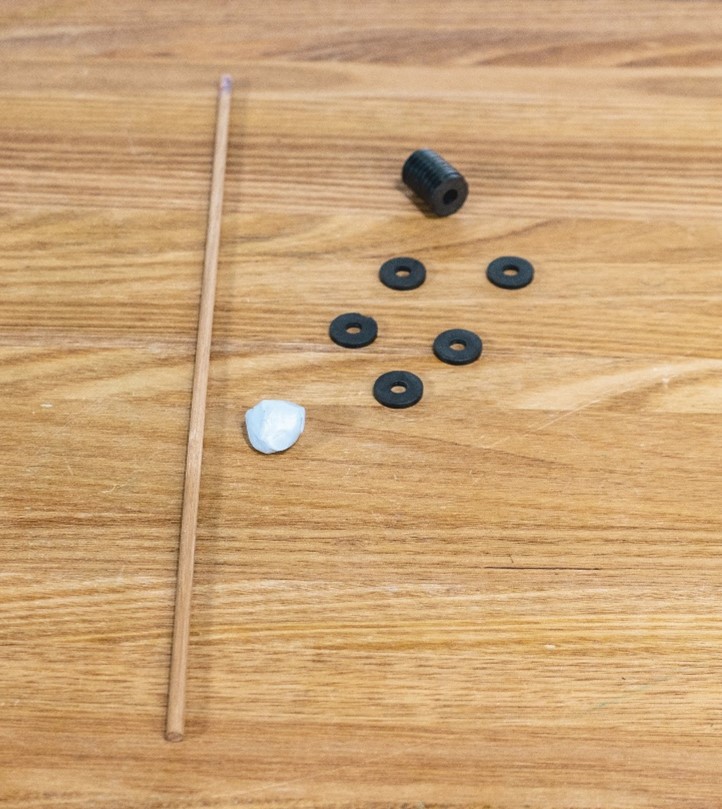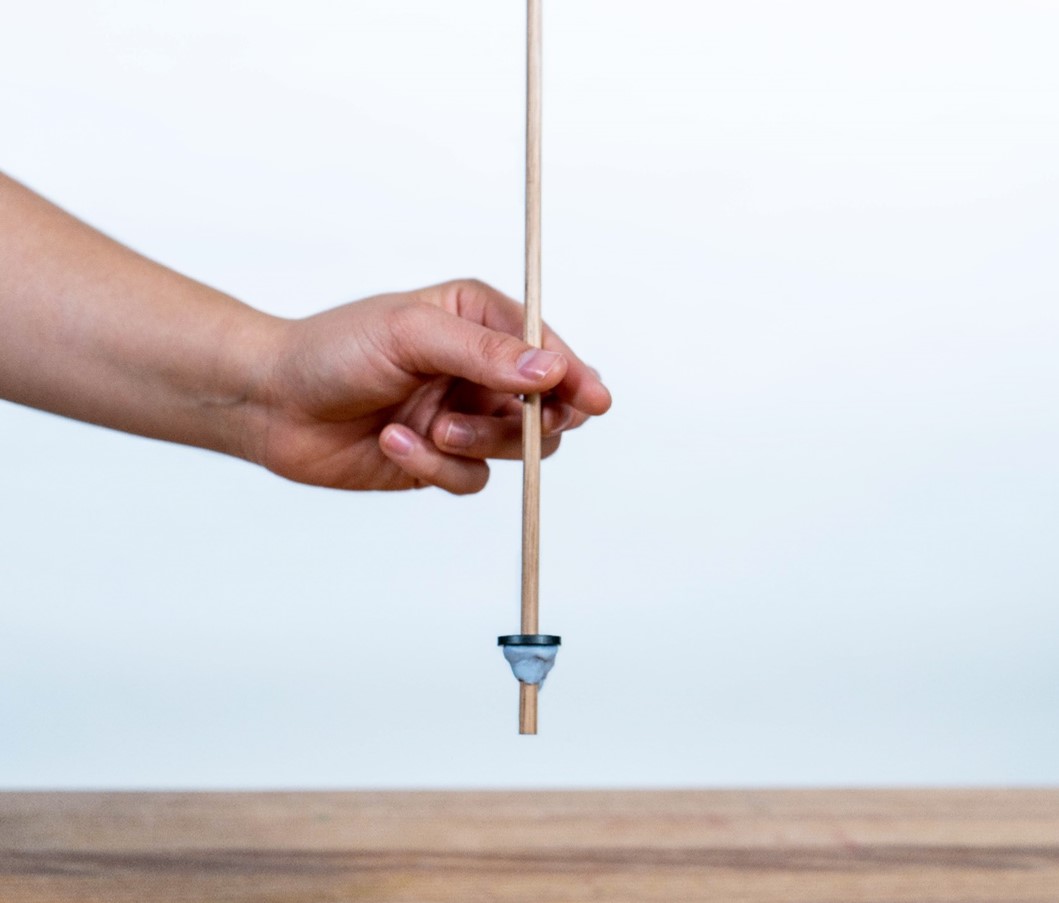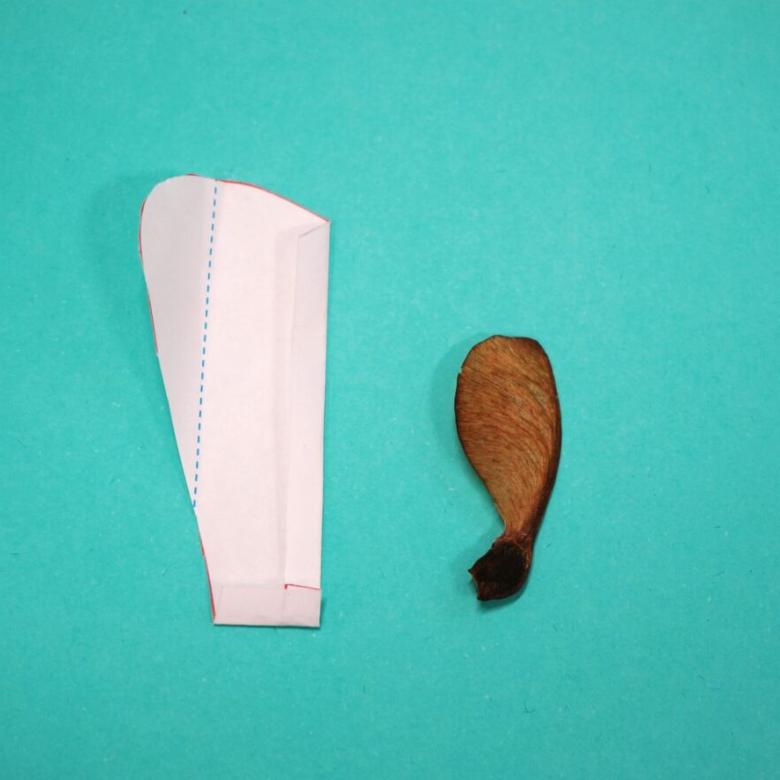You’ll need
- Between 4 and 10 ring-shaped magnets. You can get these at a hardware store – cheap, black ‘ceramic’ magnets work well
- A wooden skewer or paper straw to thread the magnets on to
- Adhesive putty or plasticine.

What to do
- Slide one magnet onto the rod a few centimetres from one end. Secure the magnet in place using some adhesive putty.

- Slide a second magnet onto the rod. Make sure the magnets are trying to repel each other. If the two magnets try to stick together flip the second magnet over and slide it back onto the rod.
- Repeat step 2 for all remaining magnets.
- Secure the last magnet in place with some more adhesive putty.
- Try shaking the rod up and down. What happens to the magnets? How do they move? You’ve now made your own fidget toy!

Questions to ask
- Do all the magnets stay the same distance apart from each other when you hold the rod vertically?
- What happens if you squeeze the loose magnets together?
- What happens if you try to levitate the magnets without the rod to hold them in place?
What's happening
All magnets have a north pole on one side and a south pole on the other side. North and south poles are attracted to each other, while poles of the same type push apart (or ‘repel’) from one another.
In our magnetic spring, the magnets are arranged so that north poles face other north poles and south poles face other south poles. This means that each magnet in our spring repels the magnets next to it! But how do magnets do this?
Magnets create magnetic fields around themselves. Magnetic fields have a direction. When two magnets get close, they’ll try to line up their magnetic fields in the same direction.
When similar poles from two magnets are facing each other, their magnetic fields push on each other to try to line up better. If they can’t line up, they’ll push each other away. When opposite poles are facing each other, the only way for their magnetic fields to line up even better is to get closer, so they pull each other together and start acting like one big magnet.
Did you know
Some animals can ‘see’ Earth’s magnetic field! There is evidence that animals such as migrating birds and sea turtles use the Earth’s magnetic field to navigate and find their way to distant nesting sites. Humans can do this too – but we need to use a compass!






